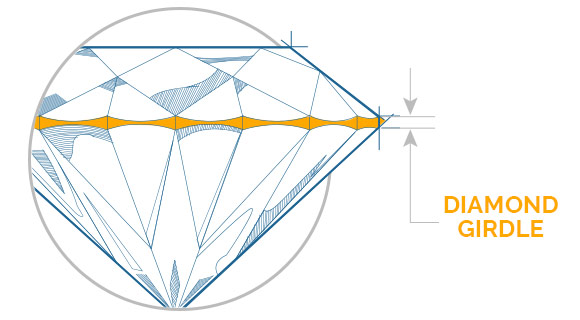 A diamond laser inscription is comprised of a combination of tiny coded letters and numbers etched upon a diamond and usually placed upon the stone’s girdle. The girdle is the thin perimeter of a diamond which divides the top crown area from the below pavilion area. When viewing a diamond in its setting or from a profile view, the girdle is the widest part (or circumference) of the polished diamond and the part of the stone that makes contact with its setting.
A diamond laser inscription is comprised of a combination of tiny coded letters and numbers etched upon a diamond and usually placed upon the stone’s girdle. The girdle is the thin perimeter of a diamond which divides the top crown area from the below pavilion area. When viewing a diamond in its setting or from a profile view, the girdle is the widest part (or circumference) of the polished diamond and the part of the stone that makes contact with its setting.
Inscriptions will help you to recognize your own unique diamond. Diamonds are usually laser inscribed by the grading lab at which they are certified.
The history of inscriptions on diamonds dates back to 1970.
In 1977, Japanese inventor Kazumi Okuda—the person behind the development of the Hearts and Arrows viewer—filed a patent for a diamond-bearing microscopic certificate of appraisal.
By 1980, a major gemological laboratory in the United States successfully implemented the laser inscription process, and it was the first commercial application of diamond marking. The process was complex and required a lot of time and special equipment, but its commercial success showed that there is a definite need for marking on diamonds.
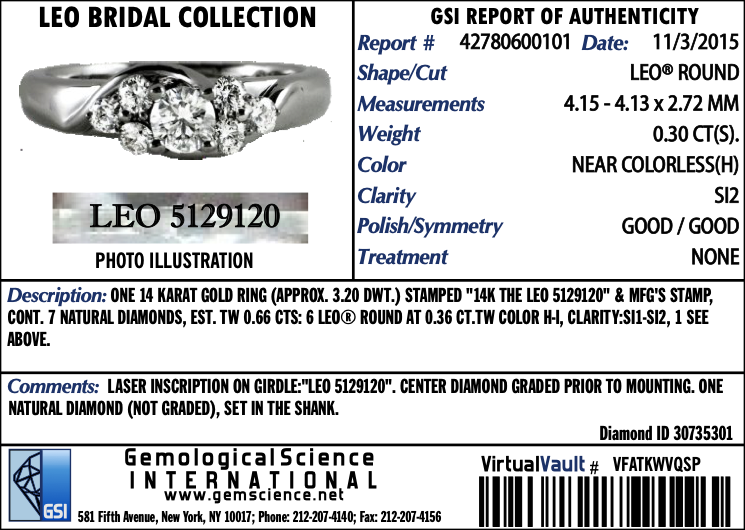
At the same time, the development of laser technology spilled over into the jewelry industry, and it wasn’t long before a new patent for laser marking on diamonds was filed. By 1990, a number of different gemological laboratories and other operators in the USA began to offer laser marking on diamonds.
Gemologists used solid state lasers, such the YAG laser, which was and still is widely used in different areas ranging from medicine to military. Over the years, new technology was developed and new lasers (i.e. excimer lasers) found their way into the jewelry industry and subsequent diamond marking.
Excimer lasers are more advanced, and significantly more expensive in terms of production and maintenance. Meanwhile, YAG lasers have become inexpensive and easier to use and be maintained.
Each of these lasers have their pluses and minuses, and subsequent advocates of each. The bottom line is that both options will get the job done. GSI uses the newest laser inscription equipment available in all its worldwide branches.
A GSI laser inscription gives consumers greater confidence when purchasing a diamond. Retailers can use laser inscription as a further selling point, since not all laboratories laser mark diamonds in this way. The inscription we laser onto a gemstone is permanently registered in GSI’s archival database.
In 1980, the Okuda process allowed a photocopy of the actual grading report to be applied on the table of a diamond, marking the diamonds with a more subtle inscription upon the gemstone.
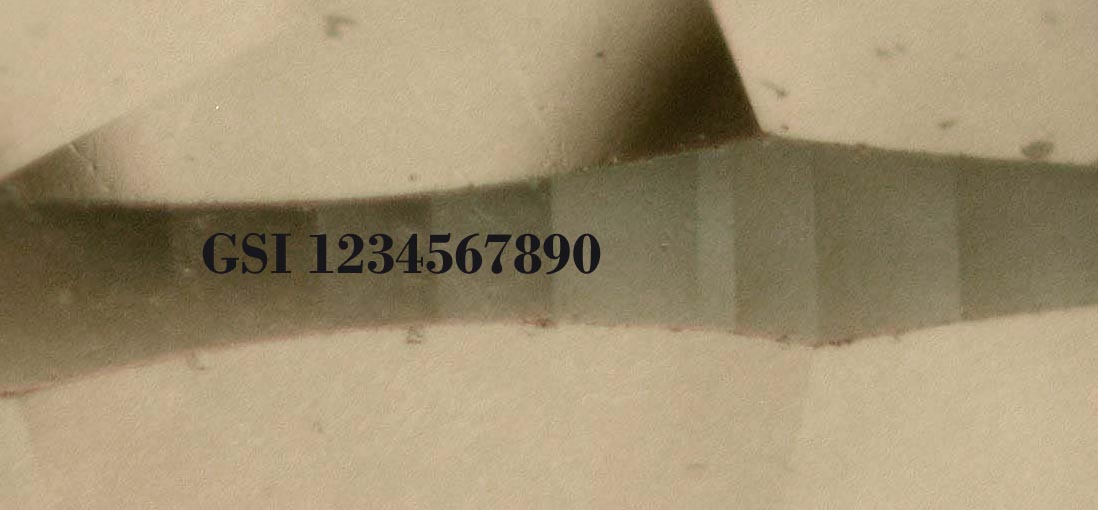
In the vast majority of cases, only the report numbers are inscribed on the girdle of diamond—and, in rare cases, the occasional personal message is added.
Another popular application is the inscription of a logo on branded diamonds, such a Leo Diamond, Tolkowsky Diamond, CanadaMark, among others. Many of these branded diamonds are graded and then later laser inscribed in GSI offices in India and worldwide.
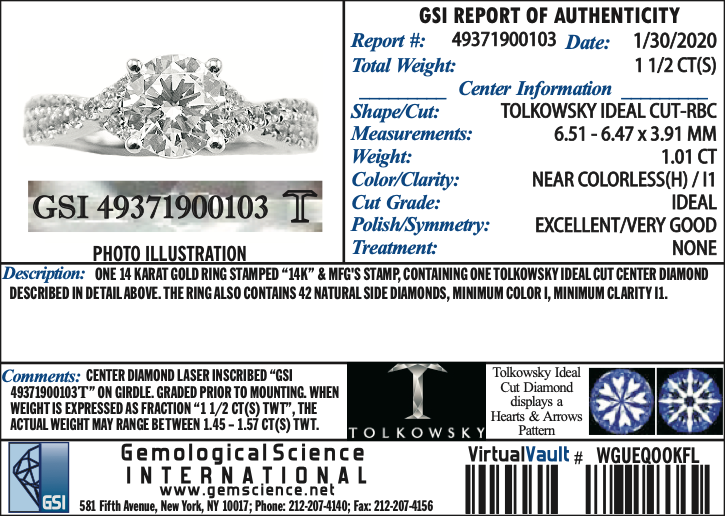
advances have made laser inscription relatively inexpensive and very fast to perform. This has created new era of diamond marking. A number of larger and smaller diamond companies mark their inventory for easier internal and external tracking. GSI works with several of these companies, and has very compatible rates and a very fast turnaround time so that the stones will circulate quickly.
To the naked eye, it’s difficult to see the inscription upon the girdle, but with a little training and explanation, practically everybody can see the mark. All that you need is a loupe and a tweezers for loose diamonds, or a single loupe for mounted diamonds.
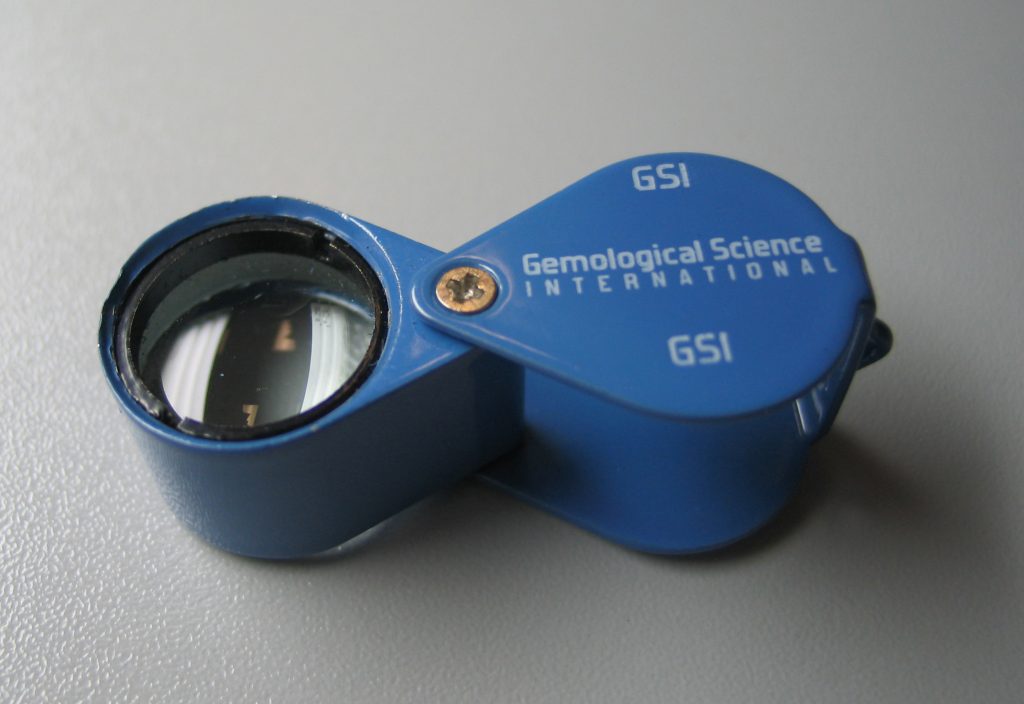
GSI’s laser operators are experienced in all kinds of markings, from simple report numbers to more complicated logos. The inscription size needs to be microscopic in order to fit discreetly onto the girdle, ensuring that the beauty of the diamond is unaffected.
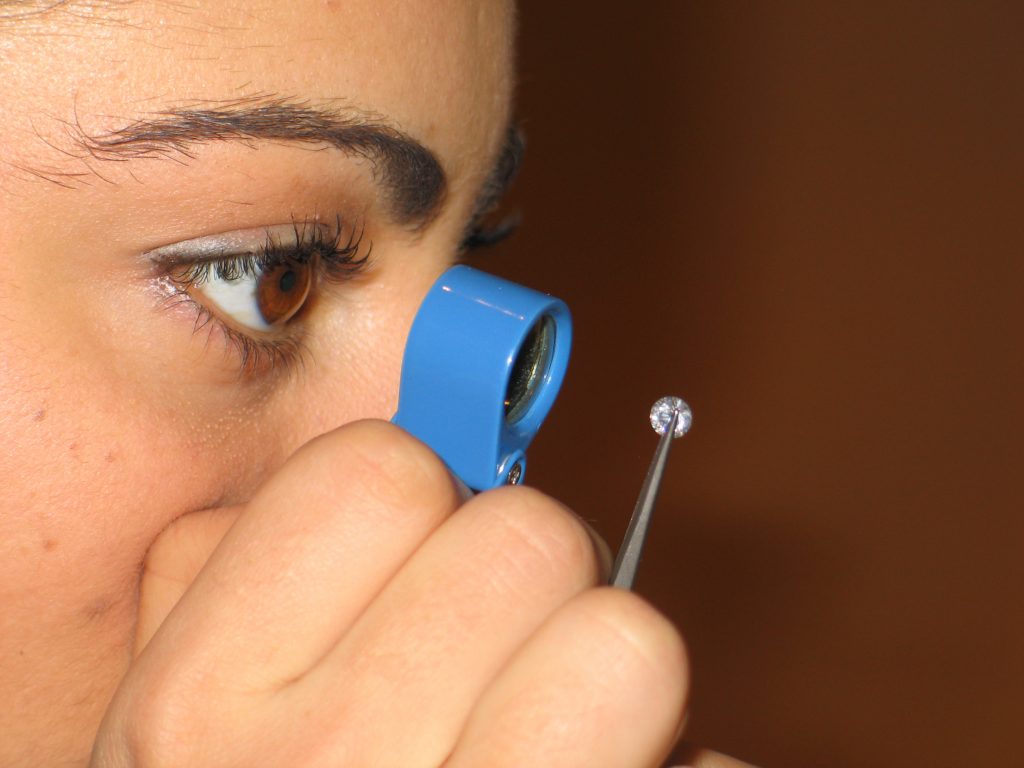
New advancements in the arena of diamond markings continue, ranging from faster and easier ways to operate a laser to ion beam deposition. The global fine jewelry industry is constantly transforming itself. From mines to jewelry showcases, commerce keeps moving faster and faster.
The one consistent aspect of marking diamonds is that it’s here to stay and will constantly evolve according to the technology that develops.

